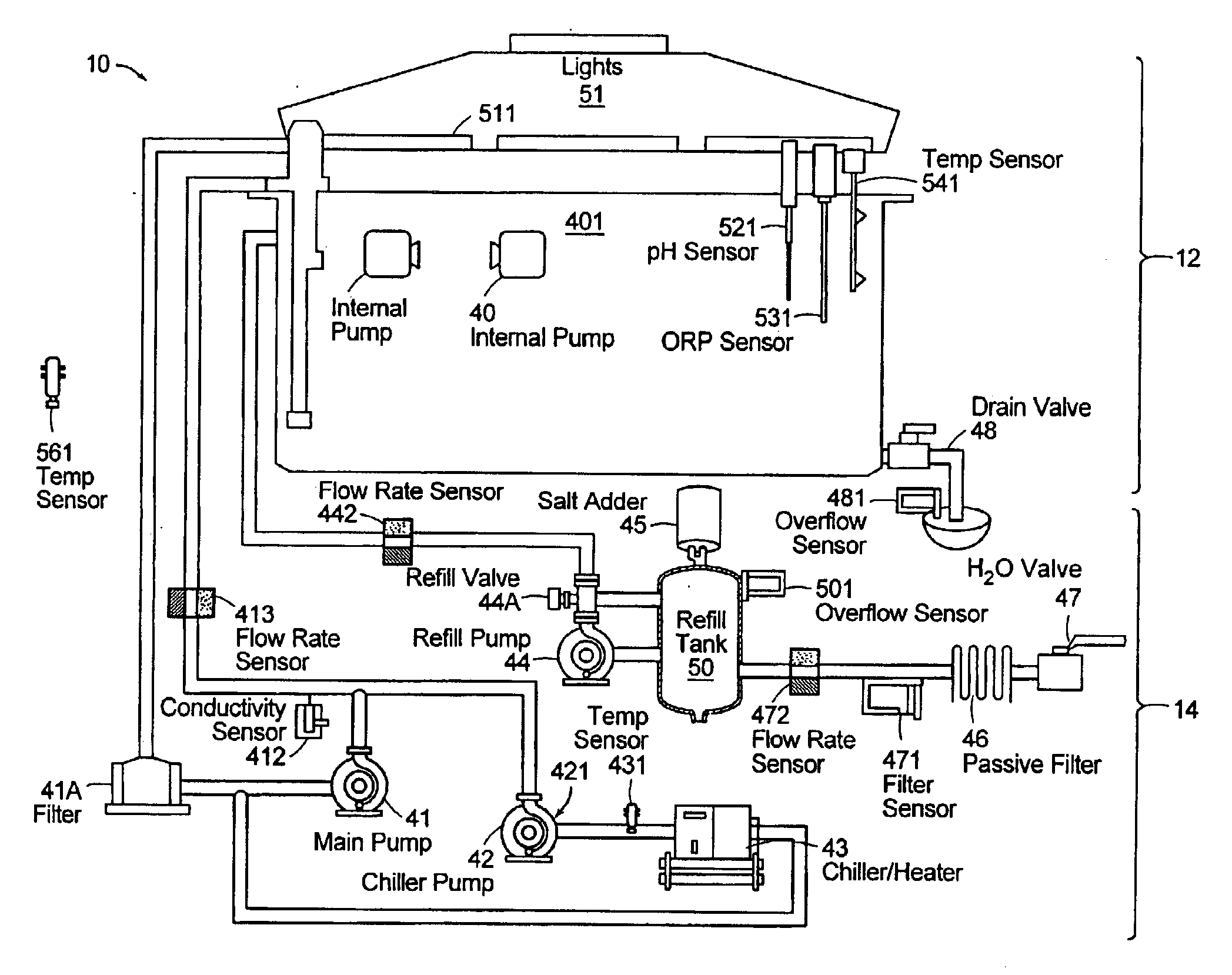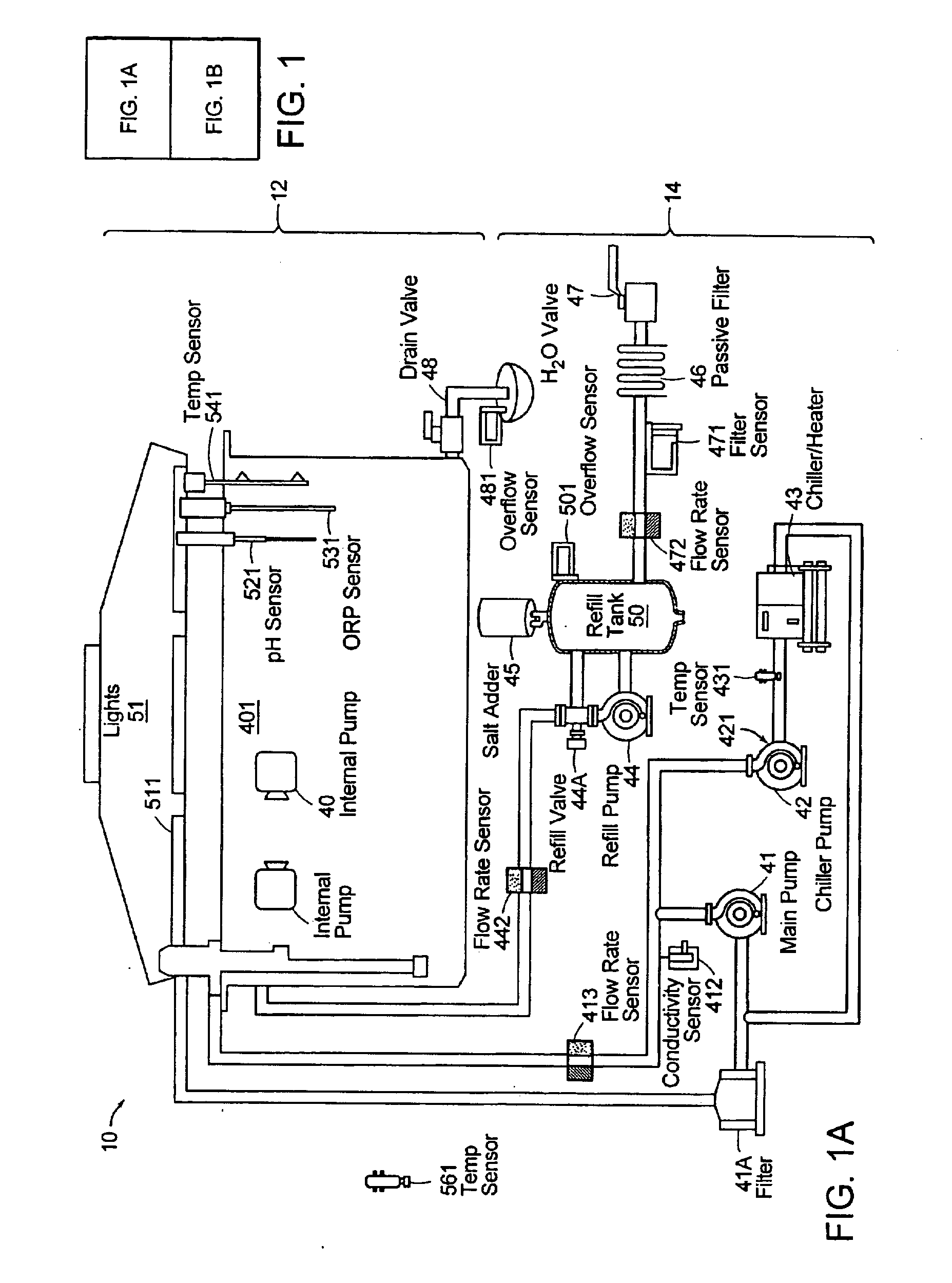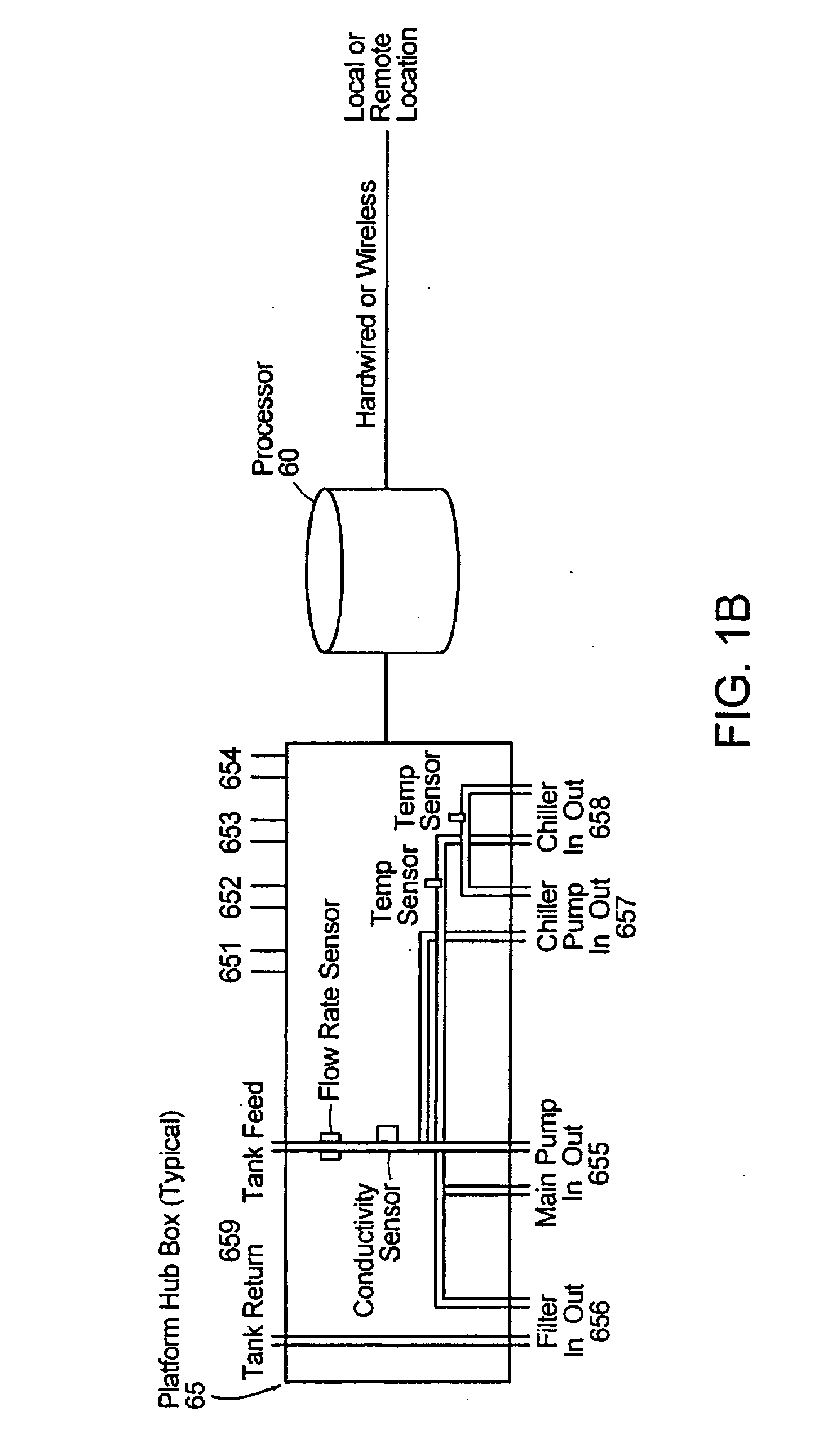Monitoring and controlling an aquatic environment
a technology for monitoring and controlling aquatic environments, applied in pisciculture, aquaria, instruments, etc., can solve the problems of affecting the overall aquatic ecosystem, and difficult to use real-time monitoring and dynamic control of intermediate control devices, so as to achieve efficient and cost-effective aquatic environment, energy-saving environment, and efficient adjustment
- Summary
- Abstract
- Description
- Claims
- Application Information
AI Technical Summary
Benefits of technology
Problems solved by technology
Method used
Image
Examples
example 1
[0043]Monitoring the Chiller
[0044]In one example, sensors on the chiller and the chiller motor enable the system to monitor the performance of the chiller. Here the sensors can monitor parameters of the chiller, such as, the chiller operating temperature, the temperature of the chiller coil, the current used by the chiller, the vibration of the chiller, and the flow rate of water coming out of the chiller pump. If the system, using the sensor fusion technology, detects a failure or an impending failure based on a comparison of the recorded parameter with the reference and / or threshold parameter, the system can send an alert and take measures to minimize the aqua system temperature changes. Such measures may include regulating the lights to reduce the addition of heat while waiting for repair or maintenance. The monitoring scheme described above, although specifically described in relation to a chiller, is not limited to the chiller. A person of ordinary skill in the art will recogni...
example 2
[0048]A Cost Effective Method of Using Temperature Sensors, Instead of Flow Rate Sensors, to Assess the Circulation in an Aquatic Environment
[0049]In this example, as illustrated in FIG. 2, a semi-industrial size aquarium 10 has a sophisticated aquarium control system. The control system uses a variety of sensors and actuators connected to a centralized or computer control system such as processor 60 to regulate the aquatic environment (heat, cooling, lighting, etc.) in a way that seeks to maximize ecosystem stability. A primary failure mode of the ecosystem is loss of water circulation through a chiller resulting in a rise in the temperature of the aquarium. The loss can be catastrophic, as in a pump motor failure, or can be gradual as in the slow clogging on an inline filter. In either case, when the lack of circulation reaches a critical state, it can be detected through a rise in the aquarium water temperature. Here, the control system may use a flow rate sensor 413 to detect bo...
example 3
[0061]Predicting an Anomaly in the System and Sending an Alert
[0062]This example shows how the invention may predict an anomaly in an aqua system and. subsequently send out notification. FIG. 6 is a graphical representation of a typical temperature performance profile from an aqua system 100 shown in FIG. 5. Other profiles may be based on other parameters or a combination of parameters of the system. This embodiment of the aqua system includes a sump tank, the prerequisites components, such as pumps, filters, chillers, heaters etc., and associated sensors, such as temperature sensors, level sensors, flow rate sensors etc., for maintaining the aquatic environment.
[0063]Referring back to the graph of FIG. 6, the nominal tank temperature profile shows the temperature of the water in the tank. The nominal sump temperature shows the temperature of the water in the sump tank. Ideally and based on the circulation path in the aquatic environment, the sump temperature should track the tank t...
PUM
 Login to View More
Login to View More Abstract
Description
Claims
Application Information
 Login to View More
Login to View More - R&D
- Intellectual Property
- Life Sciences
- Materials
- Tech Scout
- Unparalleled Data Quality
- Higher Quality Content
- 60% Fewer Hallucinations
Browse by: Latest US Patents, China's latest patents, Technical Efficacy Thesaurus, Application Domain, Technology Topic, Popular Technical Reports.
© 2025 PatSnap. All rights reserved.Legal|Privacy policy|Modern Slavery Act Transparency Statement|Sitemap|About US| Contact US: help@patsnap.com



